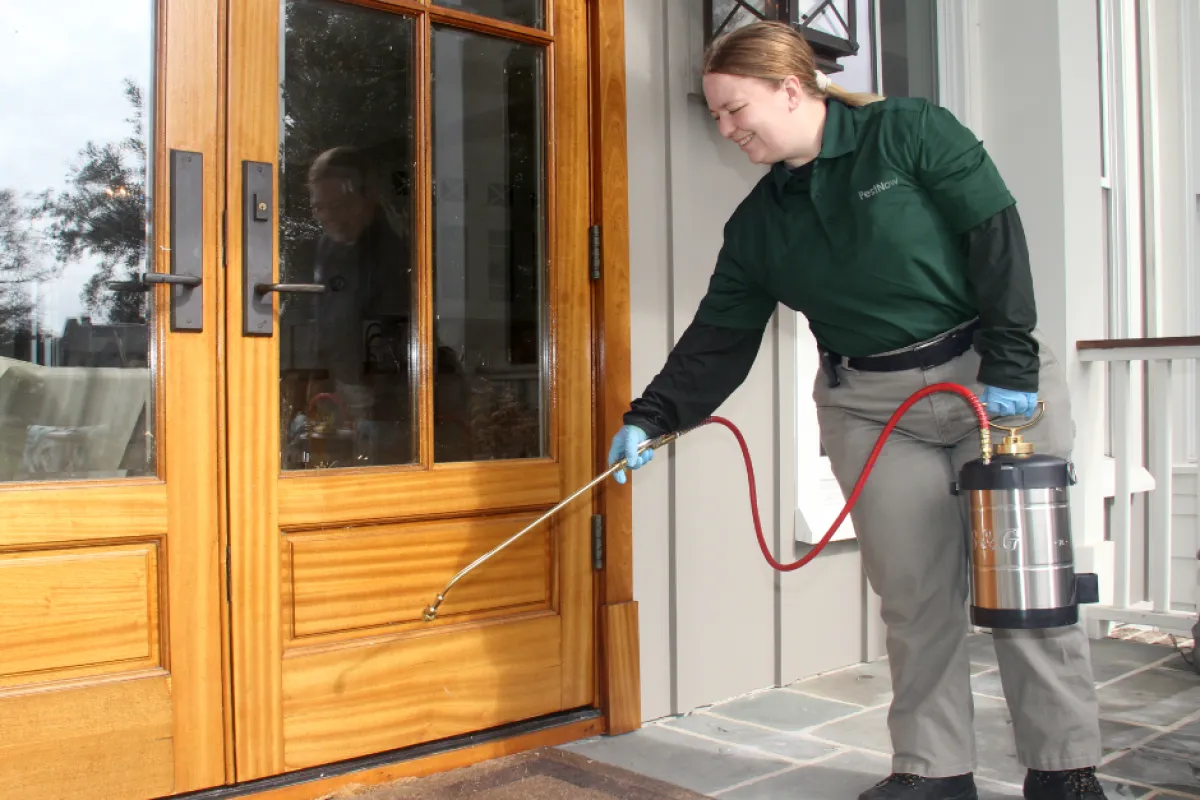A1 Charlotte Pest Control Companies - Your Neighborhood Pest Specialists
Wiki Article
Bed Pest Therapy Breakdown: Contrasting Chemical Vs. Non-Chemical Solutions
In the world of pest control, particularly when dealing with the relentless concern of bed bugs, the option between chemical and non-chemical therapy remedies can be a crucial one. Both techniques supply unique advantages and disadvantages, influencing factors such as performance, safety considerations, and total cost. By checking out the nuanced information of each technique, a more clear understanding of which course to seek in dealing with a bed pest problem can be obtained.Efficiency of Chemical Treatments
Chemical therapies for bed pest problems have been widely acknowledged for their potent and rapid effectiveness in eliminating these pests. When thinking about the performance of chemical treatments, it is critical to understand that they can supply a comprehensive and quick solution to a bed pest problem. Professional pest control specialists frequently count on insecticides to target bed bugs at various stages of their life process, including eggs, fairies, and grownups. These chemicals normally function by disrupting the bed bugs' worried system, causing paralysis and ultimate death.Additionally, chemical therapies have the advantage of offering residual results, implying that they can remain to remove bed bugs even after the initial application. This residual activity is especially beneficial in combating any kind of potential re-infestations. Additionally, the rapid action of chemical treatments can bring relief to individuals dealing with extreme bed pest problems, enabling them to gain back control of their space promptly.
Safety Interest In Chemical Solutions
One critical facet that requires mindful consideration when using chemical services for bed pest therapy is making certain the security of occupants and the setting. While chemical treatments can be effective in eradicating bed bugs, they may present threats if not handled effectively. Among the primary safety and security worries with chemical solutions is the possible damage they can cause to human health. Direct exposure to certain chemicals utilized in bed bug therapies can bring about respiratory concerns, skin irritability, or various other damaging responses, particularly in individuals with pre-existing conditions or level of sensitivities. Additionally, improper application or dose of chemical pesticides can cause harmful residues lingering in the treated area, posturing long-lasting health and wellness threats to passengers.Additionally, the ecological effect of chemical remedies is another substantial factor to consider. Some chemicals used in bed pest therapies might be harmful to valuable pests, wildlife, and ecosystems if they seep right into the soil or water systems. It is vital to utilize chemical therapies sensibly, following security guidelines, and taking into consideration less poisonous alternatives to alleviate these threats and guarantee the efficient and secure management of bed pest problems.
Benefits of Non-Chemical Methods
Considering the potential safety concerns and ecological impact connected with chemical options for bed insect therapy, checking out non-chemical techniques presents an encouraging option with a number of distinctive advantages. Non-chemical approaches offer a safer alternative for families, specifically those with people, youngsters, or family pets sensitive to extreme chemicals. These techniques eliminate the threats of exposure to poisonous substances, minimizing the capacity for unfavorable health and wellness effects. In addition, non-chemical therapies are environmentally pleasant, as they do not add to air or water contamination, making them a lasting choice for insect control.Furthermore, non-chemical services can be reliable in targeting bed pests, including hard-to-reach areas where chemical therapies might not penetrate. Techniques such as warm therapy, vacuuming, heavy steam cleaning, and mattress coverings supply extensive removal without making use of unsafe chemicals. Furthermore, non-chemical approaches can be less disruptive, calling for marginal preparation and enabling quicker reentry into dealt with locations. Generally, deciding for non-chemical bed pest therapy approaches not just focuses on safety and security and environmental management however also ensures thorough and efficient insect control.
Limitations of Non-Chemical Treatments

Additionally, non-chemical therapies commonly need several applications to attain successful removal. This can be time-consuming and might not always assure full removal of all bed pests and their eggs, especially in hard-to-reach or concealed locations.
In addition, the success of non-chemical therapies heavily depends on correct execution and thoroughness, which can be testing for people without expert proficiency. Poor application of non-chemical methods might result in incomplete removal, bring about consistent problems and the demand for extra therapies.
For that reason, while non-chemical therapies have their advantages, it is necessary to acknowledge these limitations and consider them when determining the most reliable technique for handling bed pest problems.
Cost Contrast: Chemical Vs. Non-Chemical Options
Offered the constraints associated with non-chemical therapies, a vital aspect to assess in the context of bed pest management is the cost check this site out contrast between chemical and non-chemical alternatives. In contrast, non-chemical treatments like warmth therapy or heavy steam can be a lot more pricey, with prices varying from $1,000 to $6,000 for an entire home. While the first price of chemical treatments may appear reduced, multiple treatments may be called for to completely get rid of the invasion, possibly boosting the overall cost.Conclusion

Considering the potential safety and security problems and ecological impact connected with chemical options for bed bug therapy, exploring non-chemical approaches offers an appealing choice with numerous distinctive benefits.Given the restrictions associated with non-chemical therapies, an essential aspect to evaluate in the context of bed bug management is the cost comparison in between chemical and non-chemical options. In contrast, non-chemical treatments like heat treatment or heavy steam can be more expensive, with costs varying from $1,000 to $6,000 for an entire home. While the initial price of chemical therapies may seem reduced, numerous treatments may be needed to totally get rid of the problem, possibly boosting the general price.In conclusion, when contrasting chemical and non-chemical bed bug treatment alternatives, it is vital to take into consideration effectiveness, safety and security, benefits, restrictions, Clicking Here and cost.
Report this wiki page